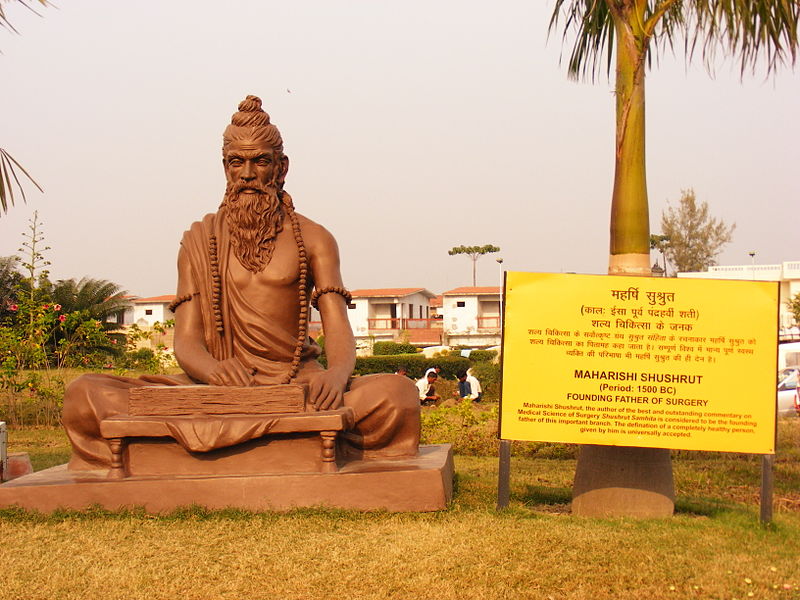Sushruta – First Ever Plastic Surgeon of the World
Humankind is blessed by being an intelligent species who has always journeyed on the road to knowledge and wisdom. Ancient India, which is increasingly being acknowledged as a progressive, enlightened civilization for those times, had developed a vast repository of knowledge on ailments and diseases and remedies to treat them.
Hippocrates, the “Father of Western Medicine” in 400 BC, laid down the Hippocratic Oath setting up the origin of rational medicine. Two hundred years before him however, in 600 BC, an Indian physician and surgeon was already proficient in several facets of medicine and had written the Sushruta Samhita, a Sanskrit text on Surgery making him perhaps, the first person in the world to understand surgical procedures.This greatness of Ancient India represented through the immense knowledge of Sushruta, doesn’t end just there. Sushruta has to his name an incredibly long list of achievements.

This photo “Shushrut statue” @flickr from wikipedia
made available under a Share Alike, Attribution license.
Sushruta – The Pioneer of Ayurveda
Sushruta’s book – Sushruta Samhita- is one of the three foundational texts of Ayurveda, India’s most traditional form of medicine. The Sushruta Samhita contains 184 chapters and description of 1120 illnesses, 700 medicinal plants, 64 preparations from mineral sources and 57 preparations based on animal sources. Ayurveda is the oldest form of medical treatment in India, and this alternative medicinal route started to take shape in the hands of Sushruta
The Master Surgeon
With well over 300 surgical procedures, 120 surgical instruments and classification of human surgery in 8 categories documented in the Sushruta Samhita, the books serves as evidence that Sushruta was indeed the father of surgery. In an era where any form of technology was absent, and tools and machinery were still handmade and primitive, Sushruta managed to perform several surgical manipulations including dental procedures, caesarian sections, hernia surgeries, laparotomy, fracture management, fitting of prosthetics and cataract surgeries. His knowledge of anatomy was so deep that he was managed to perform not only these, but brain surgery as well.
The Father of Plastic Surgery
Susrutha is also rightly known as the father of Plastic Surgery and Cosmetic Surgery. He invented the technique of forehead flap rhinoplasty – repairing the disfigured nose with a flap of skin from the forehead. Using this technique he helped reconstruct noses that were cut off as a punishment for crimes. Fascinatingly, this method of Rhinoplasty is considered the contemporary plastic surgical practice to this day. Susrutha was also the first surgeon to advocate the practice of operations on inanimate objects such as watermelons, clay plots and reeds thus predating the modern practice of the surgical workshop by half a millenium.
Through the discovery of the Sushruta Samhita we can now appreciate the genius that was Sushruta, an asset to Ancient India, a thought leader in medicine, and truly the most legendary historical physician in the world.
Sources
- http://socioparivar.wordpress.
com/2007/09/30/sushruta-the- father-of-indian-surgery/ - http://www.ijo.in/article.asp?
issn=0301-4738;year=2003; volume=51;issue=2;spage=119; epage=122;aulast=Raju - http://www.worldcat.org/title/
internet-journal-of-plastic- surgery/oclc/43535639 - http://books.google.ch/books?
id=QRvzRGn9QqkC&pg=PA94#v= onepage&q&f=false


